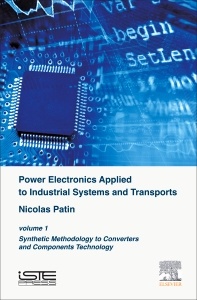Description
Power Electronics Applied to Industrial Systems and Transports, Volume 1
Synthetic Methodology to Converters and Components Technology
Author: Patin Nicolas
Language: English
Subjects for Power Electronics Applied to Industrial Systems and...:
Support: Print on demand
Out of Print
Description
/li>Contents
/li>Readership
/li>Biography
/li>Comment
/li>
Power electronics is based on the switching operating mode of semiconductor components. On this basis, the concepts of type (voltage or current) and reversibility of interconnected sources make it possible to apply a methodology for the synthesis of various types of converters.Here the author presents the major types of components available, always from a user?s point of view, with the gate drive/fire control and other auxiliary circuits that are required for their proper functioning (snubbers, for example). The different passive components (capacitors, coils and transformers) are discussed, as well as printed circuit technology, especially in the aspect of their design.This book also focuses on the importance of packaging by reviewing the electrical representation of components? thermal models and the currently available electronics? cooling technologies. Modeling is discussed, as well as different technological aspects used in the engineering design of an electronic power converter, useful for obtaining satisfactory performance and reliability.
- Presenting the essential notions in power electronics from both the theoretical and technological perspectives
- Dedicated chapters with a focus on connection rules, reversibility and impact choices of switches for converter synthesis
- Presented from a user's perspective to enable you to apply the theory of power electronics to practical applications
These books may interest you

Power Electronics Applied to Industrial Systems and Transports, Volume 3Switching Power Supplies 85.01 €

Fundamentals of Power Electronics 105.49 €


